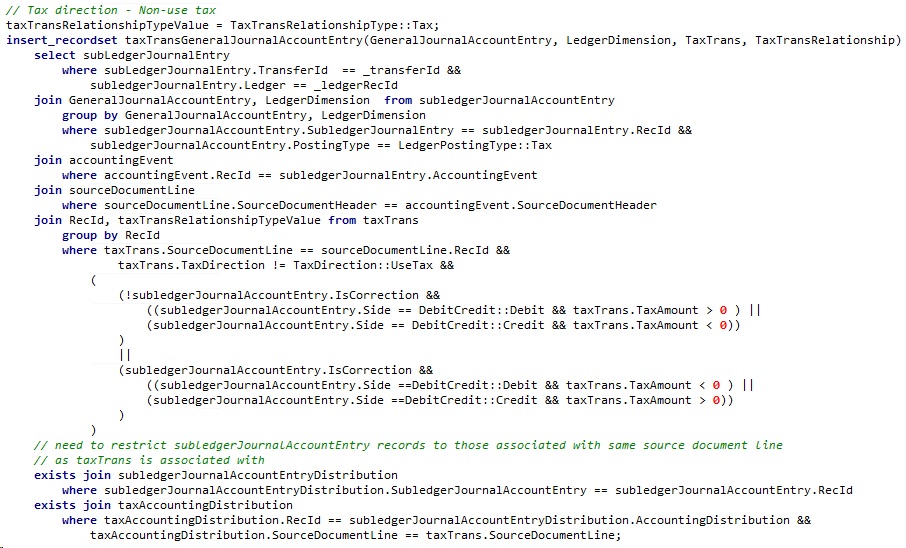Improve AX performace by fixing bad Query plans
Sometimes the Purchase invoicing department has complained that posting took a very long time to complete. We could correlate this with the slow performing SQL statements alert explained in my previous post to identify the cause, now it is time to improve AX performace by fixing bad Query plans. My colleague, Peter Prokopecz provided some great insights on resolving this problem.
Either an AX trace, or the SQL alert could reveal the bad code. In our case it was the standard functionality of matching Tax transactions with the General journal entries, which can be found in \Data Dictionary\Tables\TaxTransGeneralJournalAccountEntry\Methods\create. It is a very large insert_recordset statement with multiple inner and exists joins:

